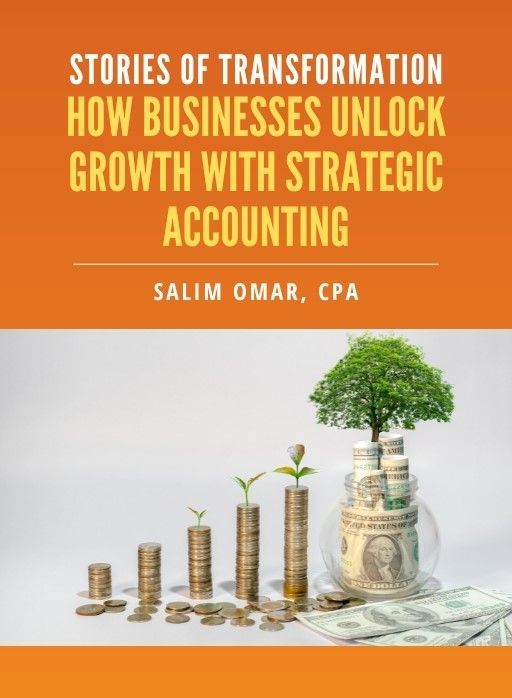Maximizing Tax Credits Through Strategic Year-End Donations
As the year ends, every dollar you move matters. You’re reviewing expenses, calculating profits, and tightening your numbers — but if you’re not leveraging charitable tax credits, you’re leaving real money on the table. Smart business owners don’t just give to feel good; they give with a plan.
With the right timing, documentation, and structure, year-end donations can unlock valuable tax credits and deductions that directly lower your tax bill — dollar for dollar. At Straight Talk CPAs, we help clients turn generosity into a measurable financial strategy.
Here’s how to make your year-end giving work harder — not just emotionally, but economically.
1. Understand the Difference: Tax Deductions vs. Tax Credits
Most business owners understand deductions, but credits are where the real savings happen.
- Tax Deductions reduce your
taxable income.
For example, a $10,000 charitable deduction might save you around $2,200 in taxes (depending on your bracket).
- Tax Credits, on the other hand, reduce your
actual tax liability.
A $10,000 tax credit means $10,000 off your tax bill — direct, dollar-for-dollar savings.
💡
In short: Deductions help. Credits
cut. The right giving strategy combines both.
2. Tap Into State-Specific Charitable Credit Programs
Here’s where the real optimization starts. Many states offer charitable contribution tax credit programs — meaning your donation earns you credits on top of federal deductions.
Examples include:
- Education and Scholarship Funds:
Contributions to state-certified tuition or scholarship programs can result in a 50%–75% state tax credit on your gift.
- Conservation and Housing Credits:
Donations to land preservation, housing trusts, or community investment foundations may qualify for similar credits.
- Veteran and Workforce Programs: Some states reward donations that fund job training or veteran support initiatives.
📈
Strategy Move:
If your business operates in multiple states, evaluate where these credits deliver the highest return. Redirecting part of your giving plan can multiply your savings without increasing your total spend.
3. Use Donor-Advised Funds to Stack Benefits
Donor-Advised Funds (DAFs) have become a strategic favorite for businesses wanting both flexibility and financial advantage.
By contributing to a DAF before December 31, you:
- Lock in your
current-year deduction immediately.
- Potentially align your contribution with
state-level tax credits, depending on fund partnerships.
- Retain the flexibility to distribute the money to chosen charities later.
This allows you to
time your tax benefit now, while planning your actual giving later — perfect for companies balancing cash flow and philanthropy.
4. Donate Appreciated Assets, Not Just Cash
Cash is easy, but donating appreciated assets — like stocks, bonds, or real estate — is smarter.
Here’s why:
- You avoid paying
capital gains taxes on the appreciated value.
- You still claim a
deduction for the full fair market value.
- In certain cases, your state’s credit program will honor the same contribution for additional savings.
💬
Example:
You donate $25,000 worth of appreciated stock that cost you $10,000 originally.
→ You avoid capital gains on $15,000
→ You claim a $25,000 deduction
→ You may receive a state credit (up to 70%) on the qualified portion.
That’s three layers of benefit — one act, multiple returns.
5. Match Giving With Profit Timing
The smartest businesses treat charitable giving as a financial instrument, not an afterthought.
If you’ve had a strong year, front-load contributions before December 31 to offset taxable income while qualifying for applicable credits.
If profits are down, set up pledges or DAF contributions to position credits for the following year.
Either way, timing is leverage — and every move should be coordinated with your CPA.
6. Don’t Lose Credits Over Documentation
The IRS loves proof. Miss a document, and you can kiss your credit goodbye.
Make sure you have:
- The charity’s
legal name and EIN
- A
receipt or acknowledgment for contributions above $250
- Written proof that the organization qualifies for the specific credit program
- Appraisals for non-cash gifts over $5,000
Digital records count, but consistency matters. Keep everything tied to your general ledger — not a shoebox or downloads folder.
7. Look Beyond Tax Savings — Think Strategic ROI
Tax credits are the financial payoff, but the strategic win is reputational. When your giving is structured, transparent, and purposeful, it enhances your brand equity. Clients notice. Employees care. Communities remember. A well-documented giving plan can also improve access to grants, partnerships, and ESG opportunities — all while saving taxes.
Bottom Line
Charitable giving should never be an emotional impulse or a December scramble. It’s a financial lever.
When structured correctly, year-end donations can unlock federal deductions, state tax credits, and long-term goodwill — a triple advantage most business owners never maximize.
At Straight Talk CPAs, we help you make those moves strategically — balancing generosity with financial intelligence.
Before the calendar flips, let’s turn your giving into a tax-smart investment.
👉
Talk to Straight Talk CPAs to plan your year-end donations with precision — and maximize every available credit before December 31.
Free eBook:
Stories of Transformation


Salim is a straight-talking CPA with 30+ years of entrepreneurial and accounting experience. His professional background includes experience as a former Chief Financial Officer and, for the last twenty-five years, as a serial 7-Figure entrepreneur.





